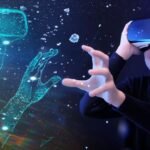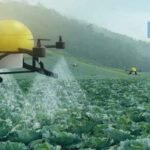AI and Drone Technology: AI’s role in enhancing drone capabilities for various industries.
The rapid evolution of artificial intelligence (AI) is propelling innovation across various sectors, and one of the most exciting applications is in the realm of drone technology. Drones, once limited to hobbyists and military applications, are now becoming indispensable tools across industries, thanks to the integration of AI. In this article, we explore the transformative impact of AI in drone technology and how it is enhancing capabilities across diverse sectors, from agriculture to disaster response.
I. A New Horizon for Drones
Drones, also known as unmanned aerial vehicles (UAVs), have transcended their initial role as remote-controlled flying gadgets. By leveraging AI algorithms, drones are becoming intelligent and autonomous agents capable of performing complex tasks with precision and efficiency.
II. AI Applications in Drone Technology
- Autonomous Navigation AI-equipped drones can analyze their surroundings using sensors and cameras, making real-time decisions to navigate through obstacles, adjust flight paths, and avoid collisions.
- Object Detection and Recognition AI algorithms enable drones to identify and track specific objects on the ground, such as vehicles, crops, or infrastructure. This is invaluable in sectors like agriculture and construction.
- Aerial Imaging and Mapping Drones with AI-enabled imaging can capture high-resolution images and create detailed 3D maps, revolutionizing land surveying, urban planning, and environmental monitoring.
- Precision Agriculture AI-powered drones assist farmers by analyzing crop health, moisture levels, and nutrient distribution. This data helps optimize irrigation, fertilization, and pest control, leading to higher yields and reduced resource usage.
- Search and Rescue Operations Drones equipped with AI can swiftly scan large areas in disaster-stricken regions, identifying survivors, mapping affected areas, and assisting emergency responders.
- Wildlife Conservation AI-enhanced drones aid conservationists in monitoring and tracking wildlife populations. Drones can detect illegal poaching activities, count animal numbers, and track migration patterns.
III. Real-Life Impact of AI-Driven Drones
- Amazon’s Prime Air Amazon is exploring AI-driven drones for package delivery, aiming to provide swift and efficient delivery services by navigating complex urban environments autonomously.
- DJI’s Phantom 4 RTK The DJI Phantom 4 RTK drone uses AI for accurate mapping and surveying, making it a valuable tool in the construction, engineering, and geospatial industries.
- Zipline’s Medical Delivery Drones Zipline employs AI-powered drones to deliver medical supplies, including blood and vaccines, to remote and underserved areas in Rwanda and other countries.
IV. Shaping the Future: Challenges and Opportunities
While AI-driven drone technology offers immense potential, it also presents challenges related to regulatory frameworks, data privacy, and safety concerns. Striking the right balance between innovation and responsible usage is crucial for the continued growth of this transformative technology.
V. Embracing the Skyward Journey
The fusion of AI and drone technology is taking us to new heights, unlocking opportunities that were once unimaginable. As AI algorithms become more sophisticated and drones become more integrated into various industries, the possibilities for innovation and positive impact continue to expand.


































